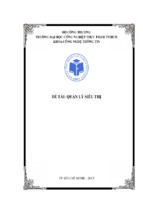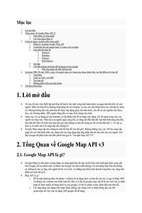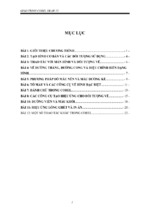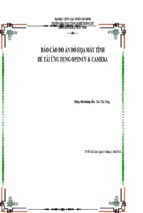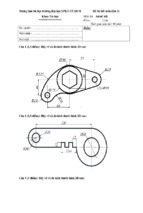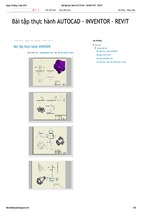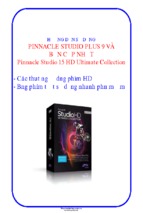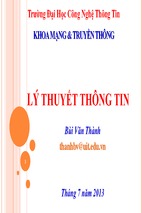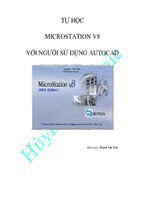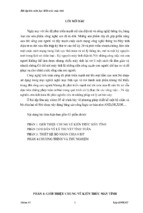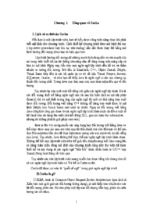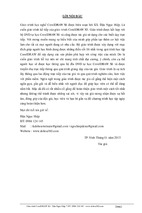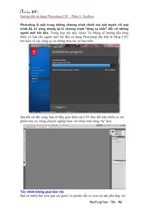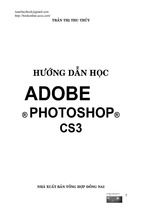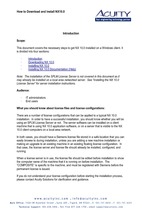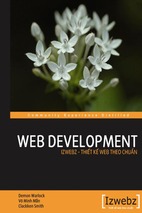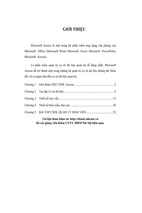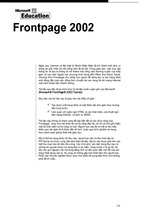Mô tả:
… the challenges are for the designers of these applications: to forget what we think we know
about the limitations of the Web, and begin to imagine a wider, richer range of possibilities. It’s
going to be fun.
—Jesse James Garrett, Adaptive Path
“Ajax: A New Approach to Web Applications”
(adaptivepath.com/ideas/essays/archives/000385.php)
Introduction
Welcome to Internet and web programming and Web 2.0! And welcome to a walkthrough
of the Web 2.0 phenomenon from the technical, business and social perspectives. We’ve
worked hard to create what we hope you’ll find to be an informative, entertaining and
challenging learning experience. At Deitel & Associates, we write programming language
professional books and textbooks for Prentice Hall, deliver corporate training worldwide
and develop Web 2.0 Internet businesses. This book reflects today’s Web 2.0, Ajax-based,
Rich Internet Application-development methodologies.
The technologies you’ll learn here are appropriate for experienced professionals who
build substantial information systems. You’ll find “industrial-strength” code examples.
We have attempted to write in a clear and straightforward manner using best practices.
Perhaps most important, the book presents hundreds of working code examples and
shows the outputs produced when these examples are rendered in browsers or run on com
puters. We present all concepts in the context of complete working programs. We call this
the “live-code approach.” All of the source code is available for download from
www.deitel.com/books/ajaxfp/
under the heading “Download Code Examples and Other Premium Content for Regis
tered Users,” once you’ve registered and logged on to our site.
The early chapters present a carefully paced introduction to “client-side” web pro
gramming, using the popular JavaScript language and the closely related technologies of
XHTML (Extensible HyperText Markup Language), CSS (Cascading Style Sheets) and
the DOM (Document Object Model). The material in the JavaScript chapters presents a
solid foundation for the deeper treatment of scripting in the Adobe Flash, Adobe Flex,
PHP and Ruby on Rails chapters later in the book. Experienced programmers will read
the early chapters quickly and find the treatment of scripting in the later chapters to be
rigorous and challenging.
Today’s users are accustomed to desktop applications with rich graphical user inter
faces (GUIs), such as those used on Apple’s Mac OS X systems, Microsoft Windows sys
tems, various Linux systems and more. Users want applications that employ the
Preface multimedia capabilities of graphics, images, animation, audio and video. They want appli
cations that can run on the Internet and the web and communicate with other applica
tions. Users want to apply database technologies for storing and manipulating their
business and personal data. They want applications that are not limited to the desktop or
even to some local computer network, but that can integrate Internet and web compo
nents, and remote databases. Programmers want to use all these capabilities in a truly por
table manner so that applications will run without modification on a variety of platforms.
In this book, we present a number of powerful software technologies that will enable
you to build these kinds of systems. Early in the book we focus on building the portions
of web-based applications that reside on the client side (i.e., the portions of applications
that typically run in web browsers such as Mozilla’s Firefox or Microsoft’s Internet
Explorer), using technologies such as the XHTML, JavaScript, CSS, Flash, Flex and
Extensible Markup Language (XML). Later in the book we concentrate on using technol
ogies such as web servers, databases, PHP, Ruby on Rails, ASP.NET, ASP.NET Ajax and
JavaServer Faces (JSF) to build the server side of web-based applications. These portions
of applications typically run on “heavy-duty” computer systems on which organizations’
business-critical websites reside. By mastering the technologies in this book, you’ll be able
to build substantial web-based, client/server, database-intensive, “multitier” applications.
If you have questions as you read this book, send an e-mail to
[email protected]—
we’ll respond promptly. For updates on the book and the status of all supporting software,
and for the latest news on Deitel publications and services, visit www.deitel.com. Sign up
at www.deitel.com/newsletter/subscribe.html for the free Deitel® Buzz Online e-mail
newsletter and check out www.deitel.com/ResourceCenters.html for our growing list of
Internet and web programming, Internet business, Web 2.0 and related Resource Centers.
Each week we announce our latest Resource Centers in the newsletter.
Key Features
Here’s some of the key features of Ajax, Rich Internet Applications and Web Development
for Programmers:
• Reflects today’s Web 2.0, Ajax-based, Rich Internet Application-development
methodologies.
• Coverage of the two leading web browsers—Internet Explorer and Firefox. All
client-side applications in the book run correctly on both browsers.
• Focus on Web 2.0 technologies and concepts.
• Chapter on Web 2.0 and Internet Business (reviewed by leaders in the Web 2.0
community).
• Focus on building Rich Internet Applications with the interactivity of desktop
applications.
• Chapter on building Ajax-enabled web applications with “raw” Ajax and with the
Dojo JavaScript libraries. Applications in this chapter demonstrate partial-page
updates and type-ahead capabilities.
• Chapter on Adobe Flex—a Rich Internet Application framework for creating
scalable, cross-platform, multimedia-rich applications for delivery within the en
terprise or across the Internet.

